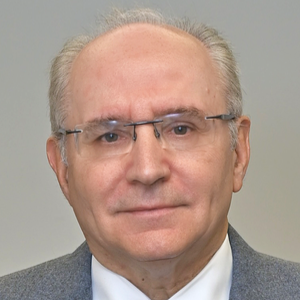The COVID-19 pandemic has caused unprecedented disruption to life in America and in hundreds of countries worldwide. As with every crisis, there are those who learn from the crisis and modify their behavior as a result thereof, and there are those who ignore the lessons to be learned from the crisis and go about life lacking any insight into the behavioral and planning modifications needed to deal with the crisis at hand as well as any future crisis. Benjamin Franklin may have put in best when he said, “By failing to prepare, you are preparing to fail.”
From an elder law and estate planning perspective, many were sadly unprepared for the pandemic. These include individuals who had failed to have the most basic of documents such as a Last Will and Testament, Durable Power of Attorney, Health Care Proxy and Living Will in place. This left them totally unprepared to deal with the impact of any lengthy illness and/or death.
While it seems inconceivable in our digital age that someone would not have executed the most basic of planning documents; sadly, it is a common occurrence.
There are six basic estate planning documents and advanced directives that everyone should have in order to deal with any potential health crisis, such as the COVID-19 pandemic:
A New York Durable General Power of Attorney with a broadly drafted Modification Section and Gift Rider. This would allow one’s agent to be able to handle the financial affairs of an incapacitated and/or quarantined person so that one’s affairs can continue to be managed. If the document is broadly drafted the agent could, in essence, do anything financially that the principal could do, including gifting of assets of the principal without limitations.
A Health Care Proxy allows one to appoint a health care agent that can make health care decisions for you in the event you are no longer able to make decisions. In New York, only one agent at a time can be appointed (you cannot have co-agents). You do not need to specify every end of life and medical decision that you want to be made for you in the proxy. You can verbally advise your agent what your wishes are about medical treatment and end of life matters, including the type of medical care you want or do not want to be administered if you are no longer able to decide yourself. For example, do you want to be on a feeding tube, ventilator, or respirator if you are comatose with no hope of recovery? The health care agent will be allowed to make said decisions if he or she knows the principal’s wishes and/or their wishes are specified in the health care proxy.
A Living Will is writing that expresses one’s wishes that they not be kept alive by extraordinary measures in the event they are comatose and/or brain dead with no hope of recovery. It is not statutorily recognized in New York but has been recognized as a matter of practice.
A HIPAA Authorization form, pursuant to the Health Insurance Portability and Accountability Act, can designate another to have access to one’s medical and hospital records. The form allows the agent—if selected by the principal—to access psychiatric, alcohol, and drug abuse records of another. The HIPAA authorization provisions are also a standard part of a Health Care Proxy.
A Last Will and Testament is a writing that is signed and dated in the presence of two witnesses. The person signing the Last Will and Testament (known as the “Testator”) can specify to whom the assets held in their name alone to be given to at the time of their demise. One can create a trust in their Last Will so that property can remain in trust for a beneficiary rather than be given outright to that beneficiary. Additionally, one can nominate an Executor, Trustee, Guardian for minor children and alternates thereto in one’s Last Will.
In order for a Last Will to be legally recognized as valid, it must be admitted to probate in the surrogate’s court of the county where one resides after the testator passes away. Otherwise, it is not considered a legally valid document and does not provide any rights to the nominated Executor.
A Revocable Living Trust (RLT) is a trust agreement that is revocable. Thus, it can be revoked, amended and/or modified in whole and/or in part. The creator of a RLT can be the sole trustee during a lifetime so long as there are named alternate beneficiaries. One’s assets can be transferred to the RLT during one’s lifetime, and one can maintain full control over said assets by being the Trustee. Upon the creator’s death, the RLT becomes irrevocable, and the trust then specifies who the ultimate beneficiaries are. The assets in the RLT can be passed to the beneficiary(ies) without the need for probate. This can be a great savings of time and money for the beneficiaries.
In conclusion, irrespective of one’s wealth, the aforestated are documents that everyone should consider executing whether faced with a pandemic or not.
Anthony J. Enea is a member of Enea, Scanlan and Sirignano, LLP of White Plains, New York. He focuses his practice on Wills, Trusts and Estates and Elder Law. Mr. Enea is the past chair of Elder Law and Special Needs Section of the New York State Bar Association (NYSBA). He is the current chair of the Senior Lawyer Section of the NYSBA. Mr. Enea is the past president and founding member of the New York Chapter of the National Academy of Elder Law Attorneys (NAELA). Mr. Enea is the president of the Westchester County Bar Foundation and a past president of the Westchester County Bar Association. Mr. Enea can be reached at (914) 948-1500 or at a.enea@esslawfirm.com

































